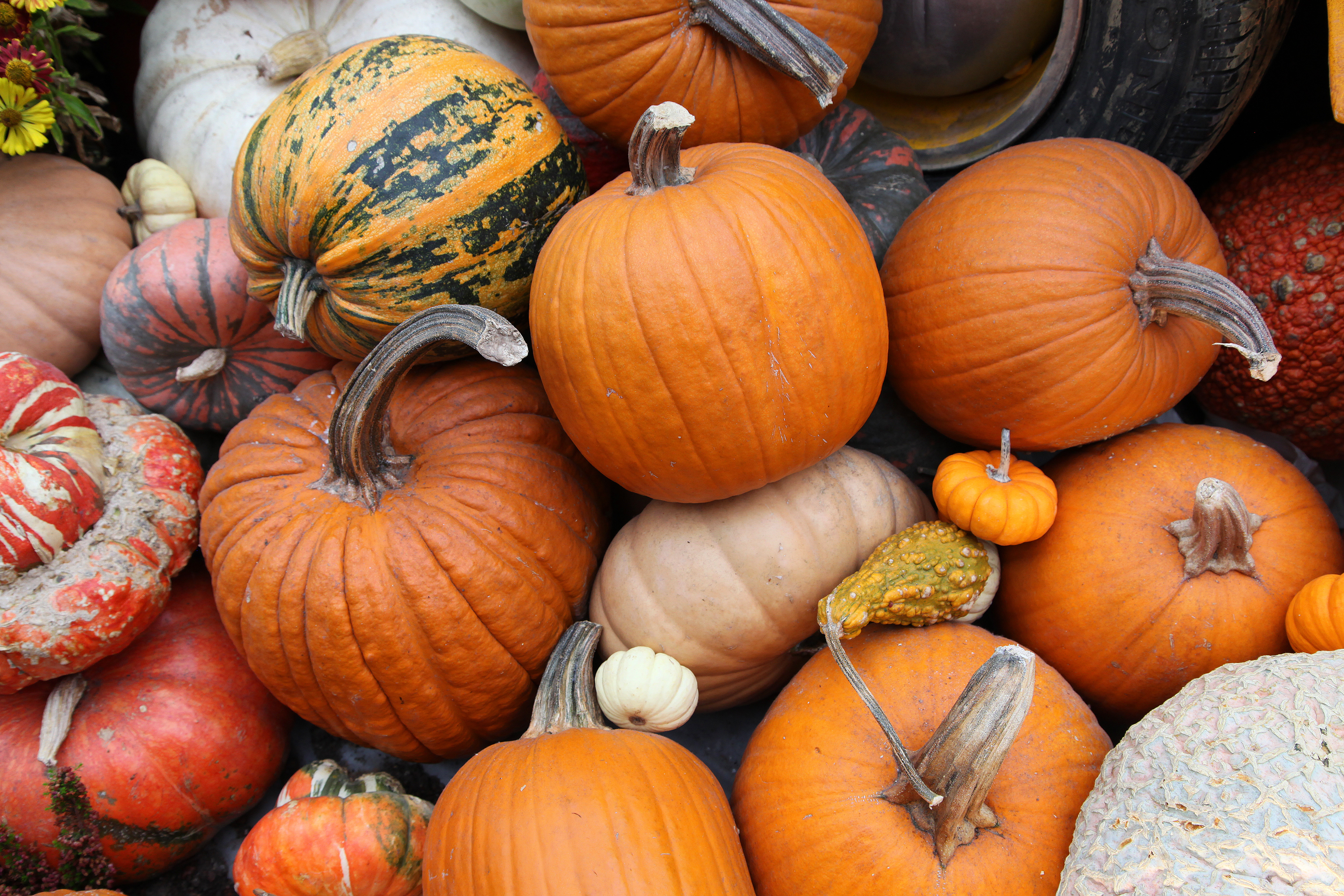Whether you’re carving some up for your front porch or using them in a decorative display, Halloween doesn’t seem to be complete without pumpkins. This year, we’re taking a break from the candy stash to figure out where all those pumpkins come from.
Pumpkins have been grown in the US for nearly 5,000 years. Depending on where a farmer is located, pumpkins are often planted in late May or early July and usually require between 75-100 frost-free days to become harvest ready. The plant loves direct sunlight and requires consistent watering to be successful. Like any crop, the success of each fall’s pumpkin patch depends on the weather, pest pressure, and disease.
According to USDA data, pumpkins are grown throughout the United States. While each state produces at least some number of pumpkins each year, roughly half of domestic pumpkins were grown in six states during 2012. The top 16 pumpkin-producing states churned out 1.5 billion pounds of pumpkins in 2017, indicating that roughly 2 billion pumpkins were harvested all together across the US.
Illinois remains supreme in the pumpkin growing contest, harvesting roughly three to five times as many pumpkins as any other state. Year-to-year, the states with the most acres dedicated to pumpkins changes roughly 25%, but the pumpkin powerhouse states remain at the top of the chart
Despite Illinois’ reign as the top pumpkin-producing state, almost 80% of the pumpkins produced there are processed for pie filling. The prices that farmers receive for pumpkins change each year. New York has seen a steep decline in pumpkin prices between 2012 to 2016, while the price of pumpkins in Texas has doubled between 2016 and 2017.
Repurpose your Pumpkin & Fight Food Waste This Year
The time, effort, and resources that farmers spend to grow our favorite fall decoration should be reason enough to find a useful endgame for pumpkins. The ever-increasing conversation around food waste in the US and beyond has inspired many consumers to see just how good they can get at reducing their landfill contribution.
The issue isn’t unique to the US, with one report suggesting that the UK will toss some 8 million pumpkins post-Halloween – the equivalent of enough pumpkin pie to feed the whole country. The holiday ranks second in terms of overall retail sales for Brits after Christmas, providing supermarkets and other retailers with a big incentive to push pumpkin sales despite the inevitable waste.
In 2015, the US Department of Energy put out a sobering announcement before All Hallows Eve stating that most of the pumpkins produced in the country wind up in the garbage and then the landfill where they produce greenhouse gas emissions.
Cooking a carved pumpkin that’s been sitting on your stoop for over a week isn’t an appealing – or safe – solution to our pumpkin waste problem. Most of the pumpkins sold for carving aren’t prime eating varieties either. Smaller and denser varieties like Jarrahdale, sugar pie, hubbard, jack-be-little, and kabocha are more palatable and may make it easier to repurpose your pumpkin as part of a post-Halloween dinner. Just make sure it’s free of any unsavory debris or bugs beforehand. There are even more clever ways to consume pumpkin here and some creative ways to cook-up pumpkin innards here such as roasting the seeds for snacking.
Another solution involves donating your used pumpkin to a local food co-op or farmer who runs a compost pile, which will feed organic matter in the soil and help grow future crops.




